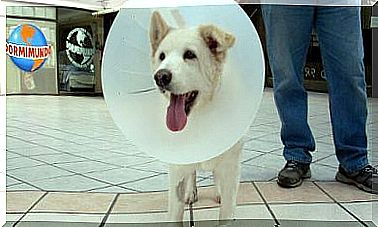Why Are Cats So Flexible?

Most cats stand out for their ability to climb and explore all kinds of places. Domestic cats are so flexible and agile that they can reach virtually anywhere without encountering any physical limitations.
Cats are naturally curious, so they tend to investigate all the nooks and crannies of the place where they live. These instinctual needs are favored by its slender morphology and endowed with numerous sensory capacities.
Cats are very agile and flexible because of their anatomy.
The feline spine is made up of about 50 vertebrae. The number may vary depending on tail length. This is a relevant number of bones, considering the small size of cats. This anatomy contributes to the animal’s mobility and coordination of the different parts of its body.
Unlike humans, who have a 90-degree rotation angle, cats are so agile and flexible that they can reach ranges of motion of up to 180 degrees. This ability is due to the presence of elastic cushioning discs interspersed between the vertebrae.

The structure of the legs is also a determining factor in the movement of the cats. In addition to being able to rotate, they are equipped with powerful shock absorbers capable of reducing the impact against surfaces.
Cats have the ability to extend their prominent claws. They do this when they sense danger, when they encounter possible prey, or while climbing.
It is also worth highlighting the silent and, at the same time, fast mobility of these animals. Cats are digitigrade, that is, they only move with the support of their fingers.
As for its forelimbs, the presence of a floating clavicle stands out, so that the forelegs are joined to the shoulders only by the muscular apparatus. This structural peculiarity, together with the special arrangement of their shoulder blades, gives cats greater flexibility. This facilitates mobility, regardless of the difficulties of the environment.
Wide range of sensory abilities
In addition to their anatomy, cats are so agile and flexible because they coordinate their movements with the perception of many stimuli.
One of the most obvious examples is its paws. In addition to the characteristic anatomical structure, the limbs of these mammals contribute to the regulation of body temperature and the detection of ground vibrations. This second ability, therefore, facilitates the animal’s perception to enter into a state of alert.

The cat’s coat, in addition to contributing to thermal regulation, is also an important sensory receptor for pain and movement. This dual functionality is, at the same time, complemented by whiskers, which are able to guide the animal in space.
In addition, cats have highly developed night vision, crucial for dodging obstacles and moving deftly in the dark. The ears, upper lips and nose also have important special sensors for movement, detection of prey or flight from potential hazards.
Finally, when it comes to the perception of the body in relation to the surface, the role of the highly developed inner ear is essential. Among other functions, this structure acts in the so-called “correction reflex”, which corrects the animal’s posture in falls at a great distance from the ground.
Cats are so agile and flexible that they can even suffer a disadvantage when living at home. Therefore, owners should be aware of their pets’ ability to move. Thus, they will be able to protect environments susceptible to the animal’s curious instincts.








